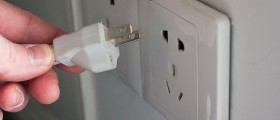An experiment funded by the National Institute on Drug Abuse finds that feeling dread about an approaching event is a question of how much attention you pay to that event.
Dread is "an issue about decision-making," said Dr. Gregory Berns, lead author of a report on the experiment in the May 5 issue of Science. "We all make decisions based on expectations of the future. We're interested in how and why people make decisions to use drugs. Addiction is a disorder of decision-making."
The decision that Berns and his colleagues at Emory University School of Medicine asked 32 volunteers to make was whether they would prefer a large electric shock quickly or would prefer to wait for a lesser shock.
The volunteers first got mild electrical shocks to the foot. The voltage was gradually increased until it reached the level that each participant said was the maximum that could be tolerated. Then each participant was told how painful the next shot would be, and was also told the voltage would be lower and the pain would be less if they waited a while. Some people in the study dreaded the prospect of having a shock so much that they preferred not to wait for the lesser shock, but to have more pain quicker.
Magnetic resonance imaging (MRIs) showed that the brain activity related to that feeling of dread occurred in specific areas of the pain network -- areas linked to attention. There's a practical use for that information in everyday life, Berns said.
"Dread is a state of mind that affects behavior," Berns said. "Understand what goes into making you dread something can help you overcome it. We can say that if you distract yourself, your dread will go down."
Dread is "an issue about decision-making," said Dr. Gregory Berns, lead author of a report on the experiment in the May 5 issue of Science. "We all make decisions based on expectations of the future. We're interested in how and why people make decisions to use drugs. Addiction is a disorder of decision-making."
The decision that Berns and his colleagues at Emory University School of Medicine asked 32 volunteers to make was whether they would prefer a large electric shock quickly or would prefer to wait for a lesser shock.
The volunteers first got mild electrical shocks to the foot. The voltage was gradually increased until it reached the level that each participant said was the maximum that could be tolerated. Then each participant was told how painful the next shot would be, and was also told the voltage would be lower and the pain would be less if they waited a while. Some people in the study dreaded the prospect of having a shock so much that they preferred not to wait for the lesser shock, but to have more pain quicker.
Magnetic resonance imaging (MRIs) showed that the brain activity related to that feeling of dread occurred in specific areas of the pain network -- areas linked to attention. There's a practical use for that information in everyday life, Berns said.
"Dread is a state of mind that affects behavior," Berns said. "Understand what goes into making you dread something can help you overcome it. We can say that if you distract yourself, your dread will go down."
Loading...
















